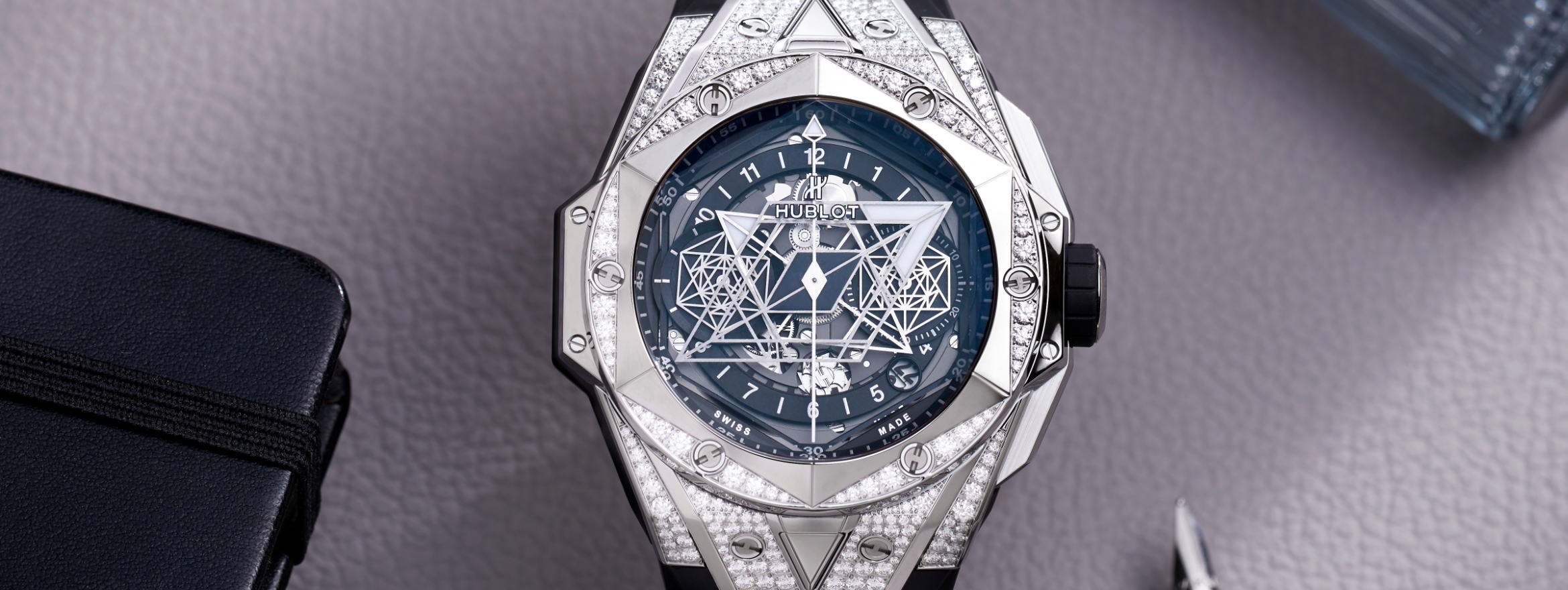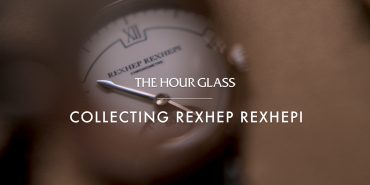Collector’s Guides • 06 Apr 2020
The Evolution of Complicated Watchmaking at Hublot
Editors Note: We’ve paired this article with photos we recently shot of new Hublot watches. Hopefully this gives some perspective on the evolutionary steps which were taken to get to where Hublot is today.
The Rise and Fall of BNB
In 2004, a new movement maker hit the market and made waves. BNB Concept began with three watch industry veterans (Mathias Buttet, Michel Navas, and Enrico Barbasini) who wanted to do things differently. In an industry that places a lot of emphasis on upholding history and tradition, BNB saw an opportunity to be forward thinking and offer a fresh perspective. Their goal was to create high-end movements from start to finish, and serve as a one-stop-shop for brands that did not have the capacity to produce complicated movements in-house. What started with a few friends in a small apartment grew to 51 employees and fifteen bespoke projects in just three short years. By 2009, BNB had surged to 187 people and 28 clients, including names like Hublot and Bell & Ross. The brand was on fire, and people were taking notice.
Interested in the Hublot watches? Let us know, we’re here to assist.
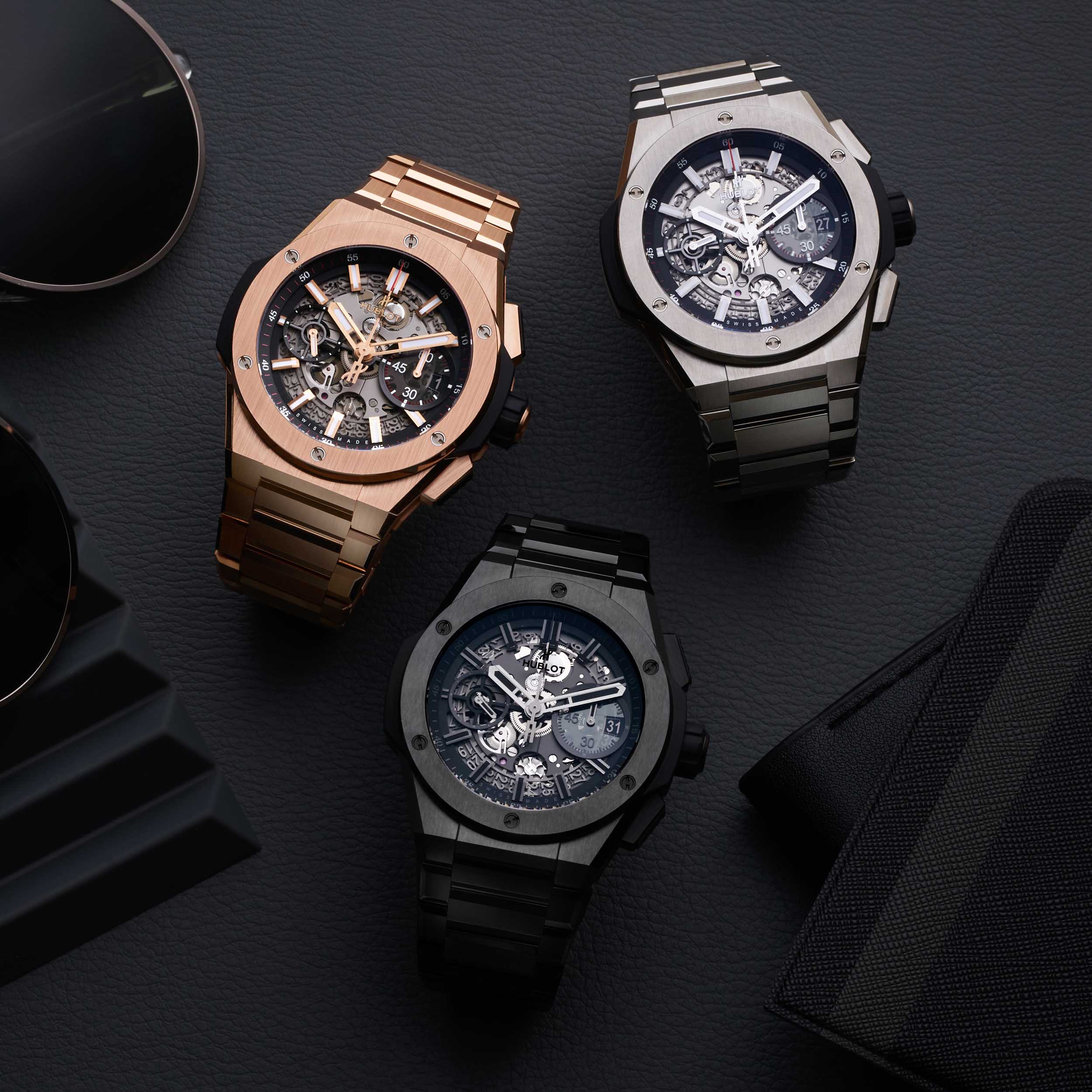
After years of triple-digit growth, BNB seemed to have hit its stride. By this point, the brand had developed a signature style to its movements, one that rejected tradition and embraced innovation. They also developed a new goal to span their work beyond the movements themselves – they wanted to master the entire chain of watch production from the case to the dial and hands. While some might have asserted BNB was overambitious, they also had a proven track record. However, everything changed just a year later.
A Second Life for BNB
At the 2010 SIHH exhibition in Geneva, BNB announced they would be closing their doors. However, the concept would ultimately gain a second life at Hublot. The same year BNB was founded, Jean Claude Biver took over the leadership of Hublot and launched the brand into a new era with the “Art of Fusion” concept – the same one BNB would adopt a few years later. Biver took note of BNB and forged their initial partnership with Hublot. Little did either brand know how crucial their work together would prove to be. When BNB folded, Biver was there to pick up the torch. Hublot purchased the movement maker’s equipment and hired 30 of their best watchmakers (including the first ‘B’ in ‘BNB’, Mathias Buttet).

Over the past ten years, we have witnessed the evolution of complicated watches at Hublot. These creations and the company’s acquisition of BNB is no coincidence. In fact, the duo’s partnership prior to BNB’s closure and Hublot’s procurement may have very well helped facilitate Biver’s “fusion” vision.

The story of how Biver brought Hublot back to life has become one of watchmaking’s greatest tales of triumph. He started by reframing the brand’s core concept. For decades, Hublot believed their innovative use of rubber was their brand identity. Biver reshaped that identity, not around rubber alone but the “fusion” of rubber and gold – two materials that might never come together without a “big bang.” And with that, the Hublot Big Bang was born in 2005. The model did more than just fuse gold and rubber. It combined a carbon dial, ceramic bezel, titanium screws, PVD-treated tungsten rotor, and Kelvar lug discs with either a gold or stainless steel case and, of course, the iconic rubber strap.
An Era of Complicated Watchmaking
The original Big Bang housed the Calibre HUB44 – a Hublot / La Joux-Perret collaborative development on the classic Valjoux 7750 chronograph movement. However BNB’s creations soon made their way into subsequent models, like the Big Bang Tourbillon Chronograph. When BNB closed shop in 2010, Biver asserted that they had been highly instrumental in giving Hublot access to Haute Horlogerie and that Hublot’s orders once made up roughly 40% of BNB’s production. In absorbing BNB, Hublot implemented changes in the development and production of their movements that same year. They did so by dividing their movements into two categories: the all-new Unico and the Confrérie Horlogère Hublot.

In 2011, Hublot debuted the first models within these two new categories. First, the Unico replaced the Valjoux movements previously found in most iterations of the Big Bang. The Unico features a dual-coupling, column wheel construction and a design that is both simpler and better optimized for industrial production. Most notably, the chronograph element and the column wheel are situated on top of the movement as opposed to under the oscillating weight. This very deliberate choice is designed to prevent counterfeiting by obscuring the movement even if it is visible through a skeletonized dial or sapphire caseback. Within the Confrérie Horlogère Hublot category, the brand also introduced its inaugural offerings in 2011. One example is the Clé du Temps, which was originally developed by BNB before it folded. This model features a distinctive tourbillon-based, variable speed movement.
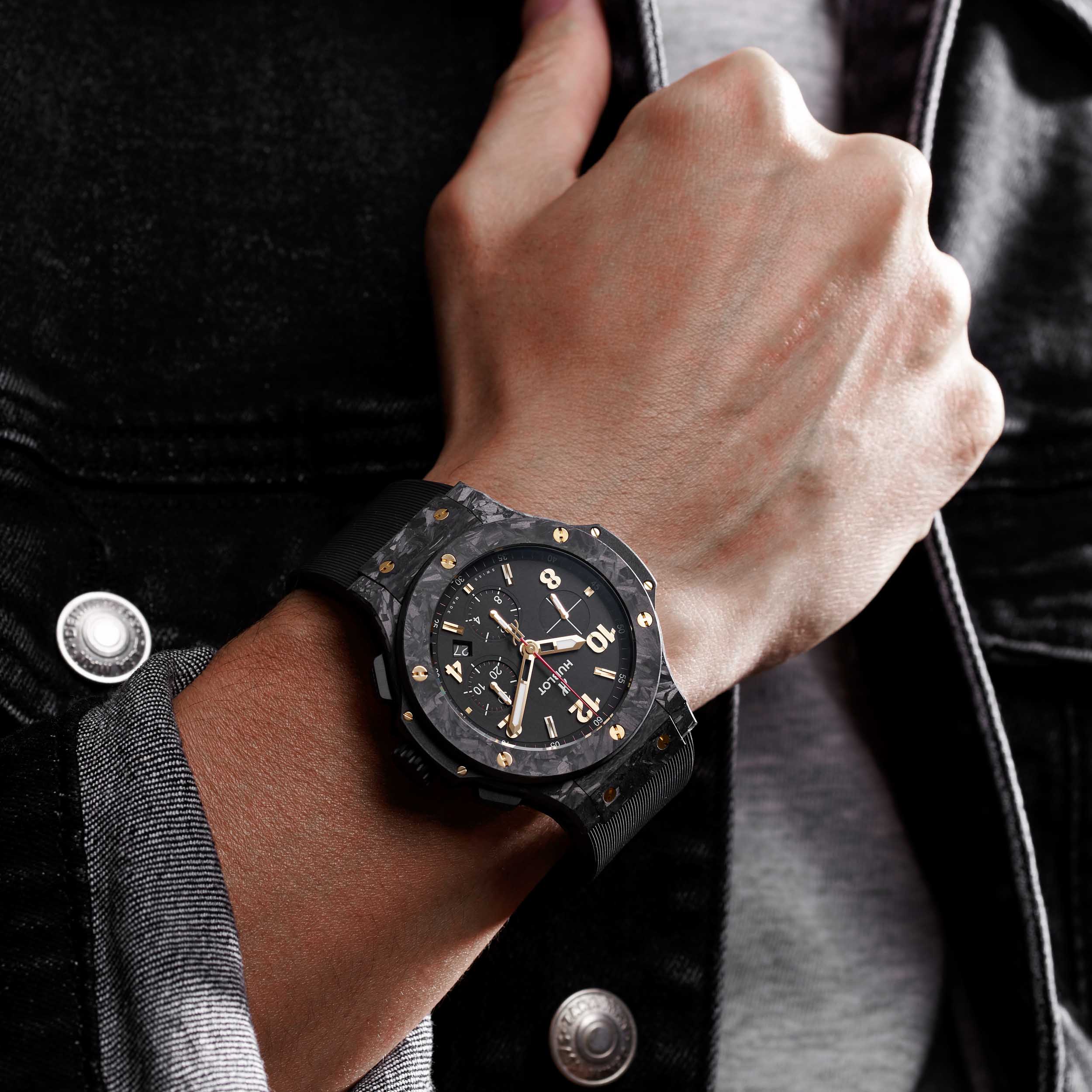
Returning to Hublot’s DNA
Under Biver’s direction, Hublot has more firmly come into their own. The brand’s initial decision to divide their movement production into two parts was directly tied to their BNB acquisition. Though the “fusion” of the two brands has ultimately proven to be fruitful, it took time for Hublot to best employ BNB’s resources without compromising their own integrity. Looking back, Biver has remarked that some of the work Hublot produced shortly after the acquisition was too heavily influenced by BNB and was not totally congruent with Hublot’s DNA. In more recent years, Hublot has continued to invest in research and development, build its own foundry, and produce highly complex watches that feel more authentic to the brand.

In the last decade, Hublot has arguably put out some of the most visually and mechanically complex watches in their history. In 2012, we saw the introduction of the Classic Fusion Extra-Thin Skeleton. It housed the HUB1300, a brand new, hand-wound movement boasting a power reserve of 90 hours and measuring just 2.9mm thick. This limited edition model was available in both titanium (100 pieces) and yellow gold (500 pieces). The Classic Fusion Extra-Thin Skeleton was so popular, the brand debuted a second, smaller variation the following year.
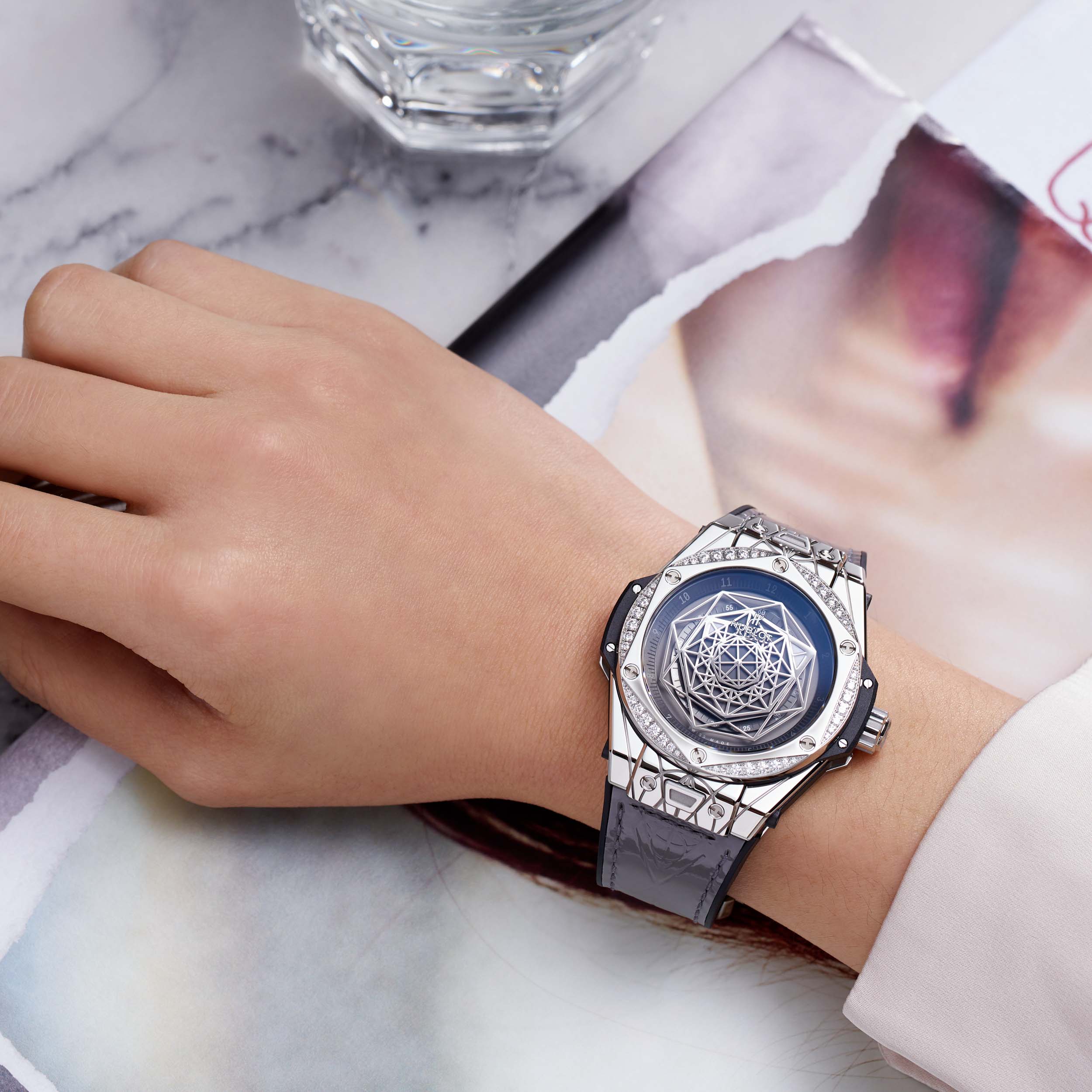
A year later, they unveiled the official watch of the 2014 World Cup: the Big Bang Unico Bi-Retrograde Chrono. Once again, Hublot developed a totally new bi-retrograde movement for the model, a first for the brand. The HUB1260 builds off the original Unico calibre with the addition of two centre-mounted retrograde hands for the chronograph function. In 2015, Hublot launched their first moonphase, the Classic Fusion Aeromoon featuring the automatic HUB1131. Two years later, they debuted yet another first: the MP-09 Tourbillon Bi-Axis powered by the HUB9009.H1.RA. In 2018, we saw the introduction of three new models: the Big Bang Unico Golf and Red Magic as well as the Big Bang Meca-10 Shepard Fairey Limited Edition. Finally, earlier in 2019 at Baselworld, Hublot released the Classic Fusion Ferrari GT, which uses the brand Unico HUB1280 flyback chronograph movement.
Interested in the Hublot watches? Let us know, we’re here to assist.




